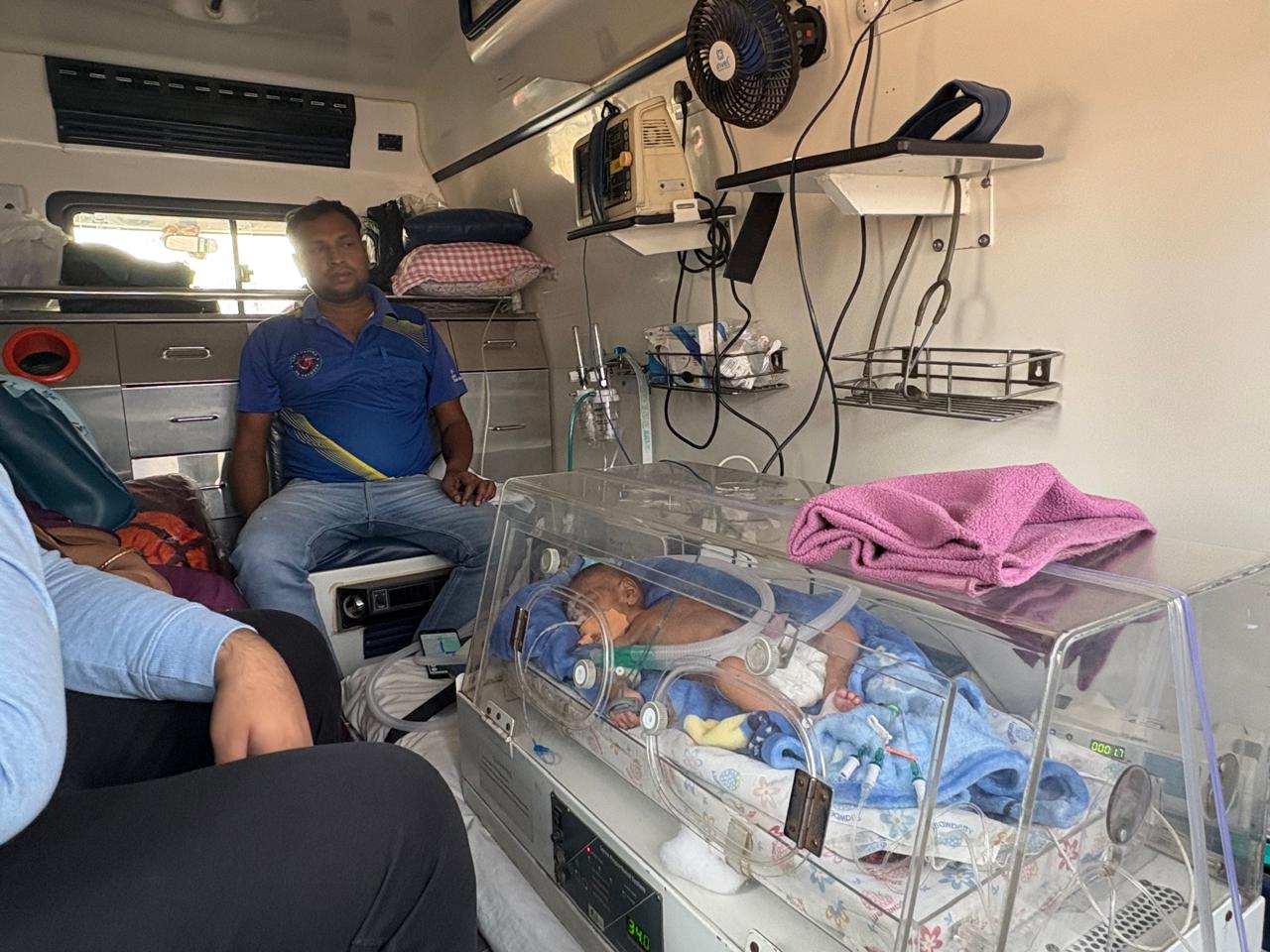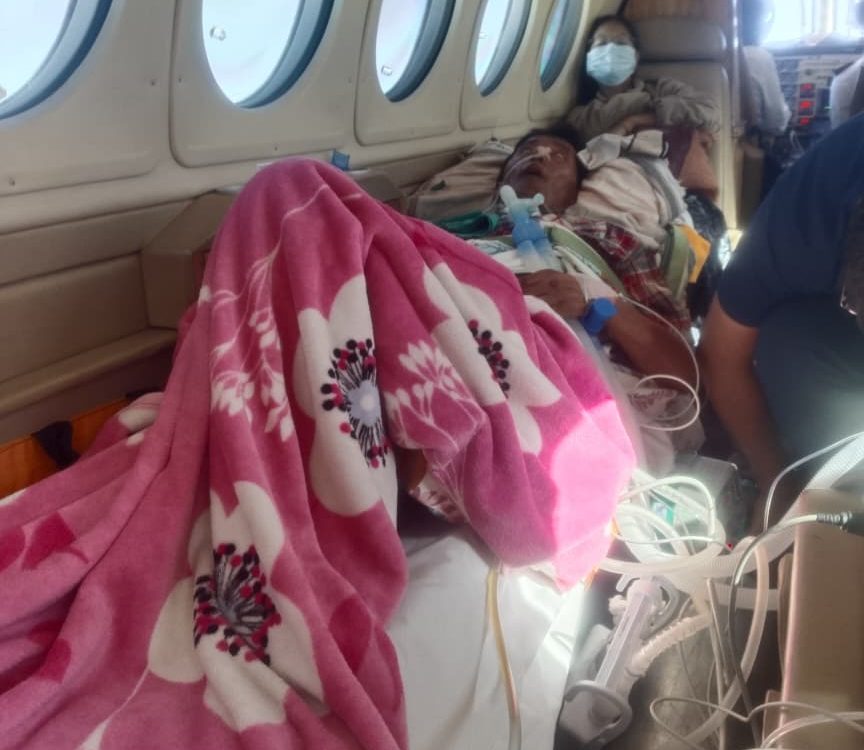


Paediatric and Neonatal Ambulance Services – Complete Guide
What is a Paediatric and Neonatal Ambulance Service?
A paediatric and neonatal ambulance service is a highly specialized emergency and non-emergency medical transport designed to safely relocate newborns, infants, and children who require medical supervision during transit. These ambulances are equipped with NICU- and PICU-grade life-support equipment, and staffed by neonatologists, paediatric intensivists, respiratory therapists, and critical care nurses. Whether by road, air, or train, the objective is to maintain seamless, continuous intensive care from the point of pickup to the destination hospital or critical care facility.
Lifesavers Ambulance also offer international paediatric and neonatal transfers, ensuring critically ill young patients can be transported across borders safely under expert medical supervision.
How Paediatric and Neonatal Ambulance Services Work
Upon receiving a transfer request, a multidisciplinary medical team evaluates the child’s medical condition and customizes a transport plan based on:
- Patient’s age, weight, and diagnosis
- Required equipment (incubator, ventilator, oxygen therapy)
- Mode of transfer (road, air, train, or international)
- Distance and urgency of transfer
An appropriate ambulance unit is prepared with:
- Specialized neonatal and paediatric equipment
- Life-saving medications
- Emergency intervention tools
The medical crew stabilizes the patient before departure. Throughout the journey, continuous monitoring of vital signs—including heart rate, respiratory rate, oxygen saturation, and blood pressure—is maintained. Any sudden deterioration is managed immediately, and real-time updates are shared with the receiving hospital for a seamless handover upon arrival.
Modes of Paediatric and Neonatal Medical Transport
Road Ambulance for Paediatric and Neonatal Transfers
Road ambulances are ideal for short- to medium-distance transfers within cities or nearby towns. Lifesavers’ paediatric road ambulances are equipped with:
- Neonatal incubators
- Paediatric ventilators
- Cardiac monitors calibrated for children
- Infusion pumps and emergency resuscitation kits
Experienced paramedical teams and paediatric doctors ensure uninterrupted care, even during city traffic or rough road conditions. Specialized temperature control systems maintain thermal neutrality for premature babies.
Air Ambulance for Paediatric and Neonatal Transfers
Air ambulances are deployed when time is critical or when patients must be transferred across long distances—either nationally or internationally. Lifesavers operates:
- Charter aircraft fully equipped as flying NICUs or PICUs
- Stretcher setups in commercial flights (for stable patients requiring lesser support)
Specialized air medical teams provide:
- Mechanical ventilation during flight
- In-flight oxygen and infusion therapy
- Monitoring through turbulence and altitude changes
- Coordination with aviation authorities for clearance and rapid boarding
Air ambulance services dramatically cut down transfer times, improving survival chances in critical conditions.
Train Ambulance for Paediatric and Neonatal Transfers
For patients who are stable but need critical care over longer but cost-effective journeys, train ambulances are ideal. Lifesavers offers paediatric ICU setups in:
- AC First Class or Second class coaches modified with ICU-grade support
- Stretchers and neonatal incubators secured for rail travel
- Paediatric specialists and critical care nurses accompanying the patient
Train ambulances provide stable, temperature-controlled, affordable transportation options between major cities and towns, especially when air transfers are not feasible.
International Paediatric and Neonatal Transfers
In today’s globalized medical world, Lifesavers also offers international medical evacuation (medevac) for paediatric and neonatal patients.
We handle bed-to-bed international patient transfers, ensuring:
- Medical team accompaniment throughout (ambulance–airport–aircraft–destination hospital)
- Coordination with embassy, visa clearance, and airline medical approvals
- Specialized stretcher setups in commercial flights or fully chartered NICU aircrafts
- Oxygen, ventilators, monitors adapted for international aviation standards
- Seamless handover to receiving medical teams in international hospitals
Countries commonly served include the United Arab Emirates, Singapore, USA, UK, Germany, Thailand, and Australia. Lifesavers manages every step — medical, logistical, and documentation — so families can focus only on the patient’s wellbeing.
Types of Paediatric and Neonatal Ambulances
Neonatal Ambulance (NICU on Wheels)
Designed for newborns and preterm babies needing temperature-controlled incubators, neonatal ventilators, and NICU-level monitoring during transfer.
Paediatric ICU Ambulance
Equipped with paediatric ventilators, cardiac monitors, oxygen support, defibrillators, and paediatric-specific emergency medication systems for children and adolescents.
High-Risk Maternal and Fetal Transport Ambulance
Critical for transporting pregnant mothers and unborn babies requiring urgent perinatal or neonatal intensive care at the destination hospital.
Importance and Advantages of Paediatric and Neonatal Ambulance Services
Children have different physiological and anatomical requirements compared to adults. Specialized paediatric ambulance services ensure:
- Proper airway management for small airways
- Controlled oxygen delivery to avoid lung damage
- Cardiac monitoring customized for neonatal and paediatric rhythms
- Safe thermal regulation for neonates
- Immediate emergency response en route
Access to paediatric and neonatal ambulances greatly improves survival rates, reduces the risk of complications, and ensures better neurological and developmental outcomes.
How to Book a Paediatric or Neonatal Ambulance with Lifesavers
Booking is simple and available 24 hours.
Contact the Lifesavers coordination desk and provide:
- Patient’s medical history and weight
- Doctor’s clearance (if required)
- Destination details
- Special requirements like ventilators or oxygen support
We offer bed-to-bed coordination, including road ambulance to airport/train, flight/train journey, and receiving hospital admission.
Common Conditions That Require Paediatric and Neonatal Ambulance Services
- Prematurity and low birth weight
- Respiratory distress syndrome (RDS)
- Congenital heart disease
- Severe infections (sepsis, meningitis)
- Traumatic injuries (accidents, falls)
- Organ transplants
- Post-surgical stabilization transfers
- Neurological emergencies (brain injury, seizures)
- High-risk obstetric transfers for fetal intervention
Tips for Parents During Paediatric and Neonatal Transport
- Share complete medical history with the transport team
- Carry important documents and reports
- Stay calm and trust the specialized team
- Follow all hygiene and safety instructions
- Bring minimal personal items if allowed
- Keep phones charged and available for communication
Paediatric & Neonatal Ambulance in Delhi NCR
Paediatric & Neonatal Ambulance Service in Bahadurgarh
Paediatric & Neonatal Ambulance Service in Dwarka
Paediatric & Neonatal Ambulance Service in Kailash Colony
Paediatric & Neonatal Ambulance Service in Kalkaji
Paediatric & Neonatal Ambulance Service in Karol Bagh
Paediatric & Neonatal Ambulance Service in Malviya Nagar
Paediatric & Neonatal Ambulance Service in Okhla
Paediatric & Neonatal Ambulance Service in Palam Vihar
Paediatric & Neonatal Ambulance Service in Panchsheel Park
Paediatric & Neonatal Ambulance Service in Paschim Vihar
Paediatric & Neonatal Ambulance Service in Patparganj
Paediatric & Neonatal Ambulance Service in Rajendra Nagar
Paediatric & Neonatal Ambulance Service in Rajouri Garden
Paediatric & Neonatal Ambulance Service in Rohini
Paediatric & Neonatal Ambulance Service in Sarita Vihar
Paediatric & Neonatal Ambulance Service in Shalimar Bagh
Paediatric & Neonatal Ambulance Service in Uttam Nagar
Paediatric & Neonatal Ambulance Service in Vaishali

Dr. Pradeep Gupta
Critical Care And Transportation Specialist
Current Handling Critical Care Ambulance services around the world, Founder And Chief Mentor at Life Savers, Start up in Train Ambulance on Ease of availability and Financial savvy.
Past Worked as Intensivist In Sir Ganga Ram Hospital(Delhi) for Many Years
Qualification MBBS, Diploma in Critical Care




